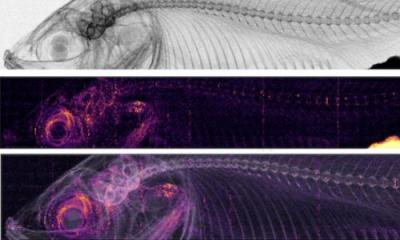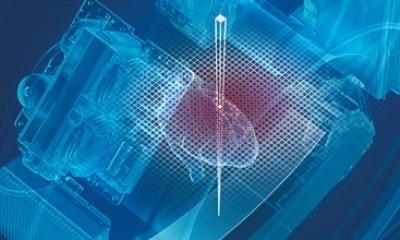The new Evis ExeraIII in practice
Higher quality images, pre-freeze and several other advances promise a rise in diagnostic and treatment standards in endoscopy

Dual Focus, brighter Narrow Band Imaging (NBI), and pre-freeze are key breakthroughs of the new generation of endoscopy devices – and new features such as these, embodied in the new Evis Exera III, open up a bundle of opportunities for endoscopy-based diagnoses and treatments, says Olympus. How might they benefit hospitals? European Hospital spoke with expert user, Paul Fockens, Professor and Chair of Gastroenterology & Hepatology at the renowned Academic Medical Centre (AMC), University of Amsterdam, which provides endoscopic services as a tertiary centre.
As chair of gastroenterology and hepatology at the AMC, Professor Fockens manages the department and combines clinical routine, education and academic research. ‘In patient care, my focus is on advanced therapeutic endoscopy as well as some advanced diagnostics of the stomach, small bowel, large bowel and pancreas. To a large extent my cases are large colonic polyps and colonic mucosal resections, endoscopic ultrasound with drainage pancreatic fluid collections, ERCP as well as most interventions in the upper gastrointestinal tract.
‘Roughly 50 percent of my cases are referrals after radiology with a requirement for interventional endoscopy, and another 50 percent are sent from other endoscopists requiring high-level endoscopic intervention at a tertiary centre. For top-quality therapeutics of these organs and regions, you need a very good diagnostic workup; neoplastic lesions are a good case in point. We can only remove superficial lesions using endoscopy; MRI merely helps in cases of large-volume lesions, which are removed surgically.’
Asked to outline the main differences between the new Evis Exera III and its predecessor, Professor Fockens explained that the main advantages are in the system’s diagnostic capabilities. ‘In many cases the images we receive from referrers prove insufficient for the preparation of an intervention. The Evis Exera III gives us more detail and images are more in focus. We’d prefer our referrers to use the new system too, in order to achieve better image quality. Currently, we invest about a third of our time in creating a more precise diagnosis; when we get really low-quality images from referrers, we schedule a diagnostic appointment first and go for therapy after our diagnosis.
‘If every physician in the care chain were to use high quality endoscopic imaging such as theEvis Exera III, this would cut down the time we take to verify a diagnosis to around 20 seconds. Better images would also make planning of the individual interventions a lot more to the point, with less need to adapt, reducing scheduling risks – meaning a significant improvement for us and the patients.’
What form does interaction with other disciplines take?
‘Patient cases are discussed, mostly after the procedure, within the tumour board. This measure partly serves quality assurance purposes and helps confirm follow-ups, and its interdisciplinary character ensures a competent therapeutic approach. For malignant tumours, going through the board is a must.’
What about the therapeutic benefits of the device?
‘For therapeutic purposes, the improved image quality of the Evis Exera III is also significantly relevant. Being able to switch back and forth using NBI is very positive; knowing exactly where to execute a cut in the region of interest is one thing; better manoeuvrability is another asset. Better vision helps to ensure that the procedure has been properly performed. In addition, motor-driven jets allow the physician to spray fluids on the lesion, which is convenient.’
Is special training required?
‘Well, handling endoscopes expertly has been and will continue to be largely dependent on endless routine hours spent using the instrument. Quality in what the physician does is totally tied to this expertise – and it will not change with the new instruments that have even more features.’
Where does hepatology come in?
‘As far as endoscopy is concerned, portal hypertension is the key focus there. Patients with, for example, a long history of a liver disease, develop varices in the oesophagus or stomach, which tend to bleed. We treat them endoscopically using bands. Interventional radiologists will do TIPS procedures for long-term effects; these two techniques are becoming increasingly complementary today. We discuss cases with surgeons, interventional radiologists, and pathologists in hepatology and inflammatory bowel disease meetings, also for benign conditions. In-house referrals from other specialties, such as surgeons, are frequent because, in the Netherlands, there is no financial competition between specialties.’
Are there additional notable advantages?
‘Apparently, acquiring really good images of the upper gastrointestinal tract present difficulties to endoscopic devices; everything in the region is continuously moving, which is a challenge to video and still frame capture. But now, with the Evis Exera III, even physicians who are not good photographers can get good results thanks to the new Normal and Near imaging modes and Pre-Freeze. The latter helps to improve the functionality of the “freeze” button: you don't freeze exactly the last image, but the video-processor instead scans the previous images and automatically selects the last image that was well in focus. A lot more details and better, high-resolution images are the result.
‘As a side-effect, the higher resolution helps us cut down on doing biopsies, which saves us costs on pathology.
‘In future, with more patients referred with high-quality images based on this generation of devices, we hope to save some time thanks to better scheduling and reduced duplicate diagnostics.
PROFILE:
Paul Fockens is Professor of Gastroenterology & Hepatology at the Academic Medical Centre, University of Amsterdam, and Chair of the AMC’s gastroenterology and hepatology department. He is also President elect of the European Society of Gastrointestinal Endoscopy (ESGE).
02.11.2012











